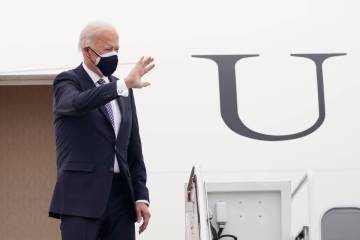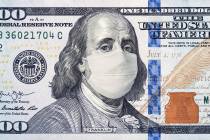RICHARD A. EPSTEIN: Red state, blue state
Anyone who takes a close look at the death tolls from the coronavirus cannot fail to be struck by the following anomaly. The states that have the highest death rates, concentrated in the Northeast, have adopted the most interventionist policies. Those that have had the lowest death rates have, usually by local decision, opened up their economies at a more rapid rate.
Part of the explanation lies in the fact that, with the exception of an outbreak in Washington state, the Northeast was the region in which the virus first took root. The dense population in New York City and in northern New Jersey, coupled with the extensive use of a tightly packed subways and commuter rails, allowed the coronavirus in its silent phase to spread rapidly before any countermeasures, either public or private, could be introduced.
Yet by no stretch of the imagination should that be regarded as the whole story. In dealing with the coronavirus, we should never ignore the grim fact that misguided governmental interventions have increased deaths from the virus.
Some of those misguided policies were put into place in New York, New Jersey and Michigan, which issued orders that nursing homes had to admit COVID-19 patients into their facilities, even though they were — and well knew they were — woefully ill-prepared to deal with that onslaught. It should have come to no surprise that the virus worked its way through a vulnerable population, gaining speed as it went, killing thousands along the way.
That fatal policy choice was reversed in May. The rapid decline in the death rates in these states is largely attributable to undoing a policy that never should have been implemented in the first place.
In contrast, Florida had the right idea from the outset. It is economic and social madness to try to contain the virus by imposing extensive restrictions on the hundreds of millions of individuals — virtually everyone under 50 — who face little serious risk from the virus in a futile effort to protect the most vulnerable populations, namely those older than 65 who have known risk factors, or “comorbidities,” including asthma, diabetes or kidney disorders. One recent study noted that about 42 percent of the deaths are linked to nursing homes, even though well under than 1 percent of Americans live there. The flip side is that the fatality rates outside these select groups are well under 0.1 percent.
The best way to protect the vulnerable is to put a short but stout fence around those easily identifiable populations so that virus carriers cannot invade these sanctuaries, which is what Florida Gov. Ron DeSantis did (to much abuse) back in March. The rest of the population was largely free to go about its business, such that by mid-May total fatalities were 140.3 per 100,000 in New York (which in reality meant far higher levels in and around New York City) as opposed to about 8.8 deaths per 100,000 in Florida, which has a larger elderly population.
Now that New York has reversed its practices, the mortality levels have started to plunge.
Today, there is really a tale of two Americas — one blue and one red — that will determine just how fast the economy will open. The red states have lower death rates and higher levels of economic activity. The blue states have the worst of both worlds. For those fortunate to live in locations where the bans are being lifted, there is little to do but to take advantage of the new economic opportunities while taking prudent steps of institutional and self-protection as individual circumstances warrant.
But what should those people do in blue states where the heavy hammer of government threatens to drive businesses into bankruptcy and consign ordinary people into a wave of frustration and despair? Blue state governors and mayors too often take great pride in insisting that they will enforce their edicts as if they were the letter of the law. There has, unfortunately, been no way whatsoever to use standard political techniques of persuasion and legislative intervention to stop the abuses of one-person rule. The legislature is never in session, so the king — er, governor — continues to dispense arbitrary orders to the mighty and weak alike.
So at this point, unsurprisingly, there is a rising movement to take to the shops, restaurants, streets and beaches to cast off the current manacles. I hope if these actions are done sensibly and in numbers, the beleaguered authorities will relent. But if not, anyone who is fined or arrested should get legal representation to challenge in court the current restrictions for their absurd overbreadth and perverse effects that no longer can be justified in the name of the public health or safety.
Richard A. Epstein is a professor at the New York University School of Law, a senior fellow at the Hoover Institution and a distinguished service professor of law emeritus and senior lecturer at the University of Chicago. His Review-Journal column appears monthly.




























